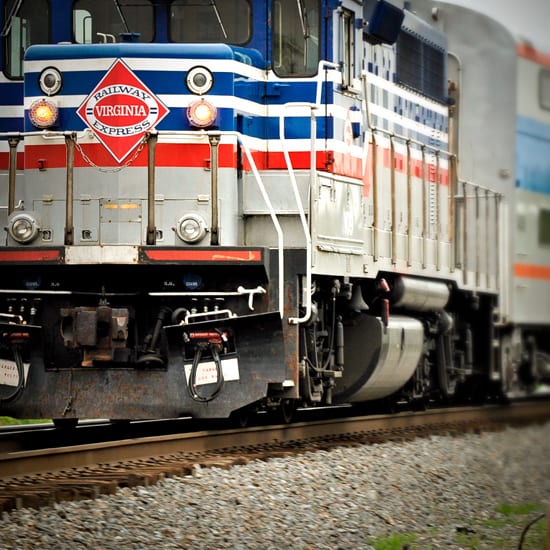This and other lifesaving tips for Rail Safety Week.

Trains and people have coexisted in Virginia since the early 1800’s, and with a romantic history and our nostalgia for rumbling cars and distant whistles, it’s easy to underestimate the dangers of the frequent, and sometimes daily, encounters we have with tens of thousands of tons of moving freight. The train you see – way down the track as you squint into the sun – is closer than you realize, and it’s travelling faster than you think. Trains can be unexpectedly quiet as well, especially lighter commuter trains. When you pair the difficulty of judging distance and speed with situations where it may be hard to hear an oncoming train –pedestrians wearing earbuds, vehicles with closed windows, etc– the potential for an accident on the track becomes imminent.
It can take a train more than a mile to stop.
This week is National Rail Safety Week, and in Virginia there’s an ongoing effort to inform the public about the best ways to be sure you are safe anytime you are around railroad tracks. Virginia’s State Corporation Commission has a Rail Safety Outreach Program, which is committed to reducing the number of injuries, fatalities, and collisions of any type at highway railroad crossings — and with more than 6,700 miles of track in Virginia, it’s a good bet that most Virginians regularly encounter a rail crossing, so this is an important safety campaign!

It can take a train more than a mile to stop once engineers are aware of a track obstruction, making it nearly impossible to avoid collisions with stalled vehicles or inattentive pedestrians at street crossings. Because of this, most railroad safety tips simply advise having heightened awareness of your surroundings and common sense (wise advice whenever you’re on the road!).
These are the basics: Take a few seconds to give the railway your undivided attention. You should only cross a train track at a designated pedestrian or vehicle crossing, and NEVER cross against a railroad signal, even if you don’t see or hear a train. Before you begin to cross the tracks, make sure that there is enough space to clear the opposite side; trains are wider than just the tracks so be generous when estimating for your vehicle and anything you’re towing. There should be at least 6 feet clearance beyond the farthest rail.
What if you do find yourself stuck on a train track?
This is a deadly situation and the experts advise to immediately evacuate the vehicle and move away from the tracks. The Federal Motor Carrier Safety Administration has tips here for what to do next. The most surprising piece of advice might be that the safest way to exit a vehicle stranded on the tracks, is to walk away from the vehicle and toward the train while at the same time angling away from the track at about a 45-degree angle. This is because if the train does in fact hit your car, truck, or equipment, the debris caused by the collision will spread out in the direction that the train is moving, and you’ll want to put yourself as far away from that dangerous spray of metal and glass as you can.
The facts tell us that in the United States, a vehicle or a person is struck by a train every three hours. That’s a distressing statistic, and we fully support all efforts to better educate people about how to stay safe around trains and railroad crossings. The number of people who have been injured or killed at railroad crossings has been decreasing for the past 5 decades, and we hope to see that trend continues until it’s zero.
Burnett & Williams Personal Injury Lawyers are experienced with all vehicle injuries including those sustained in train and railway accidents. If you’ve been hurt in an accident involving a railway, we’re here for you. Call us for a free consultation, (703) 777-1650, or contact us on the web.